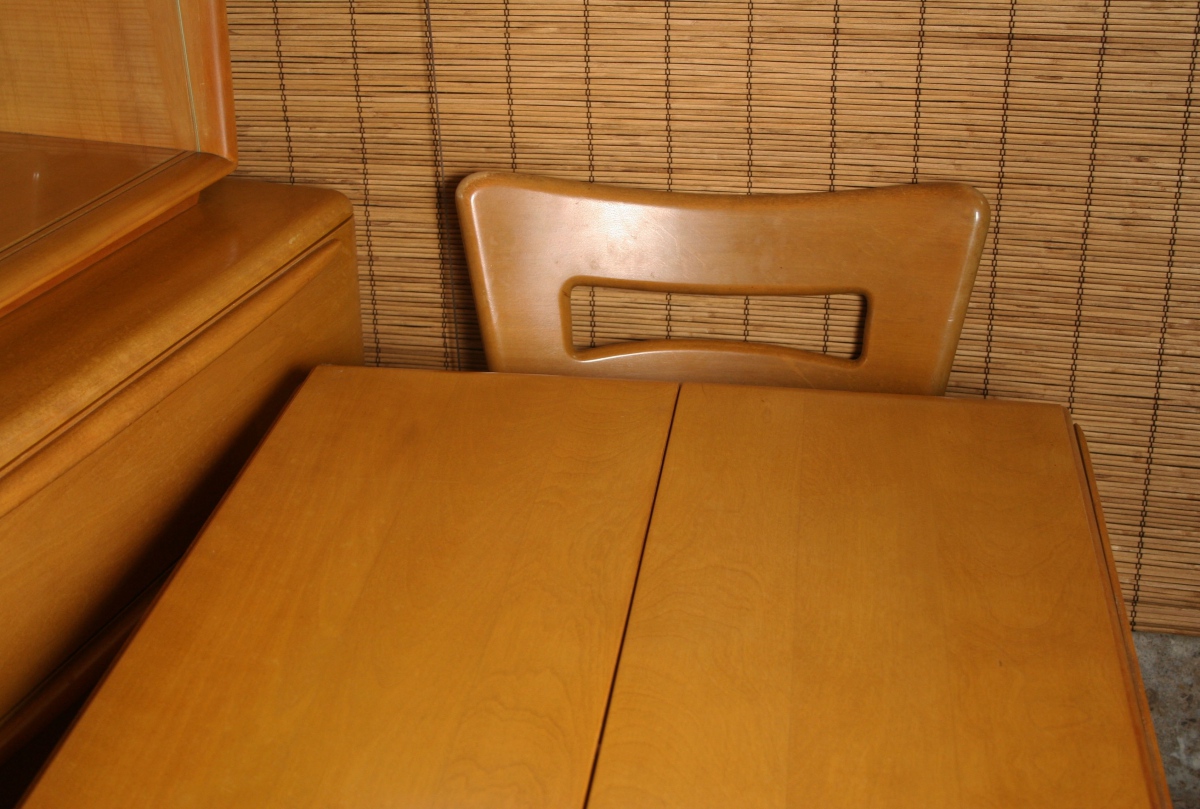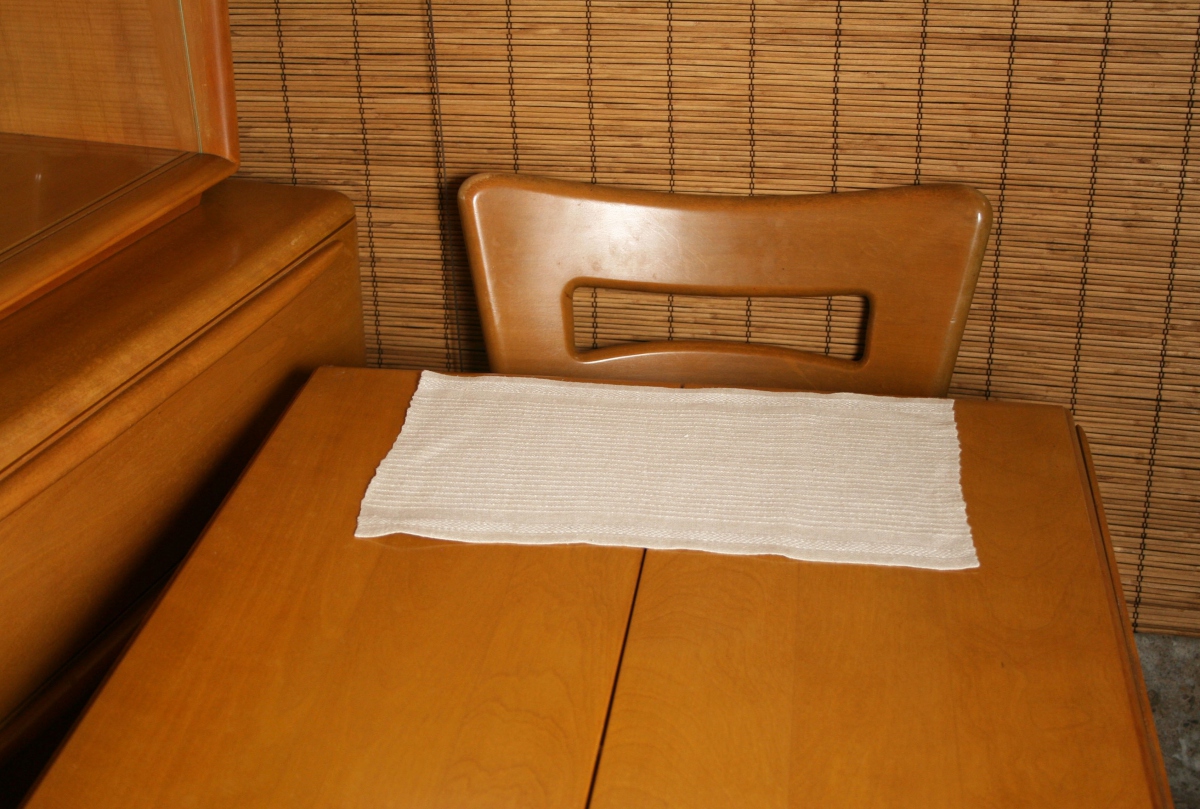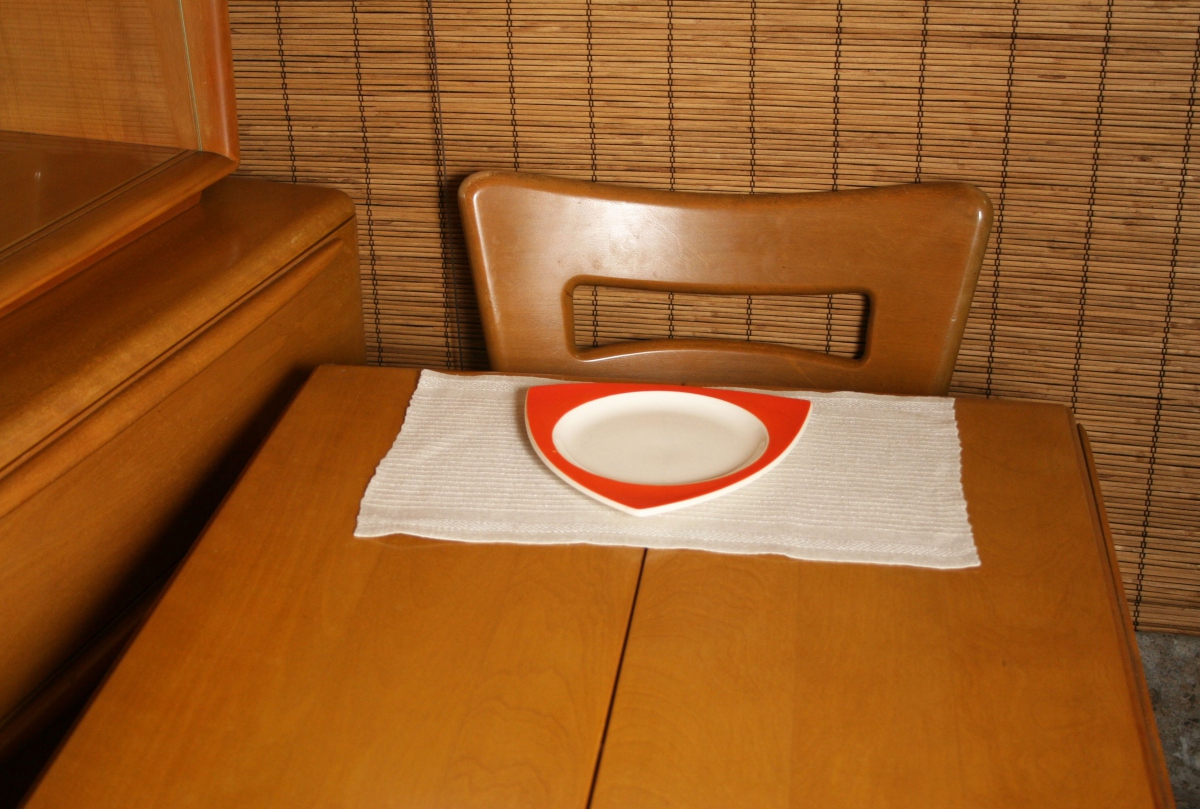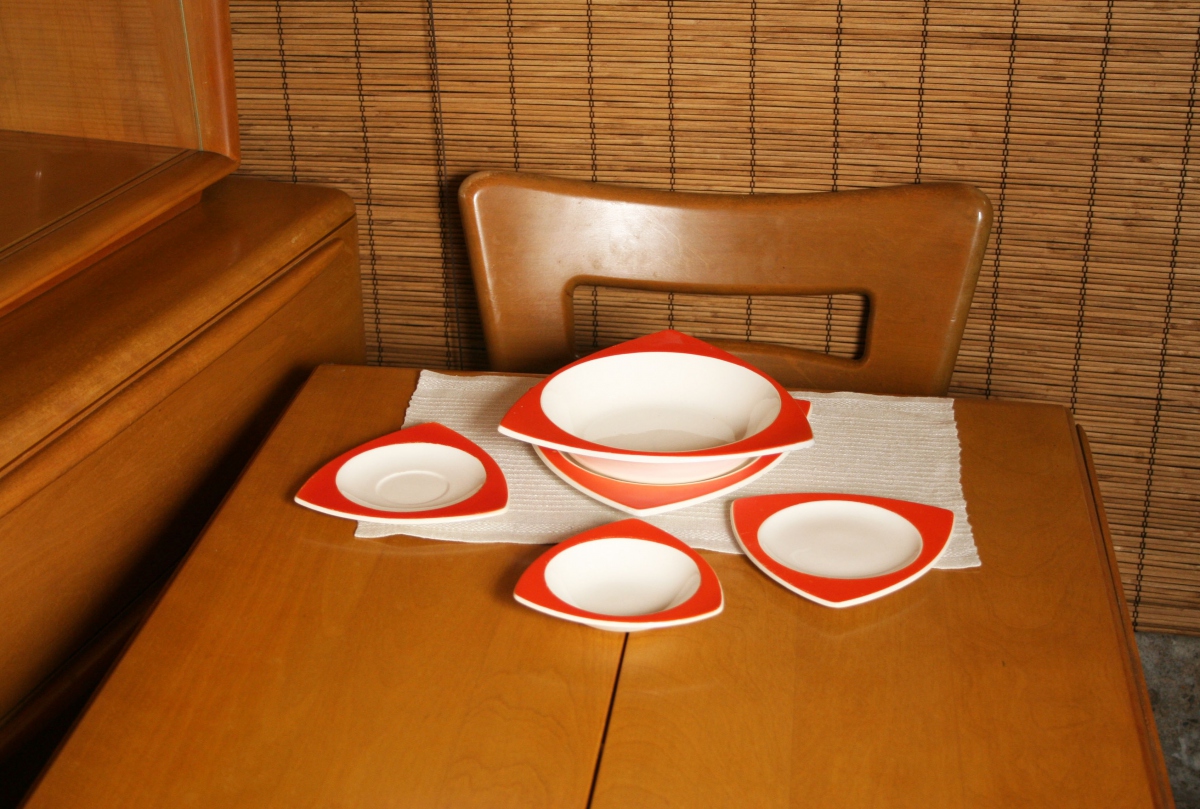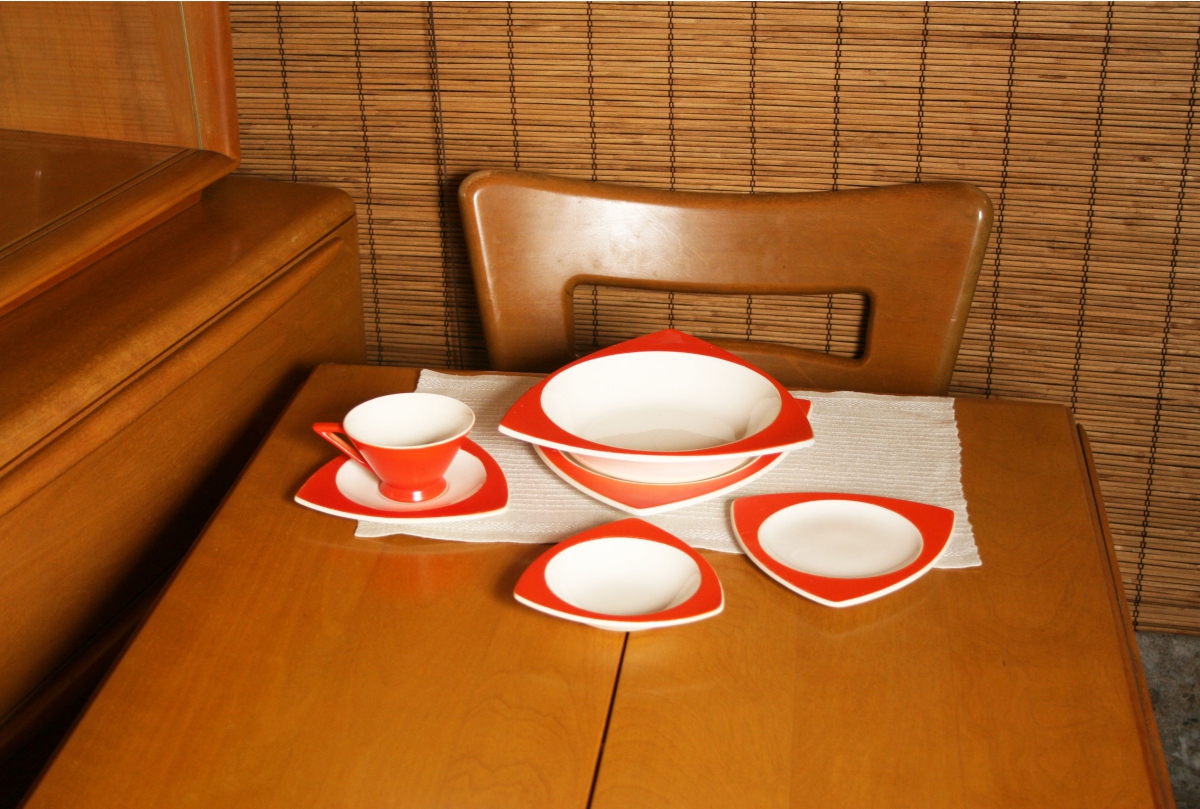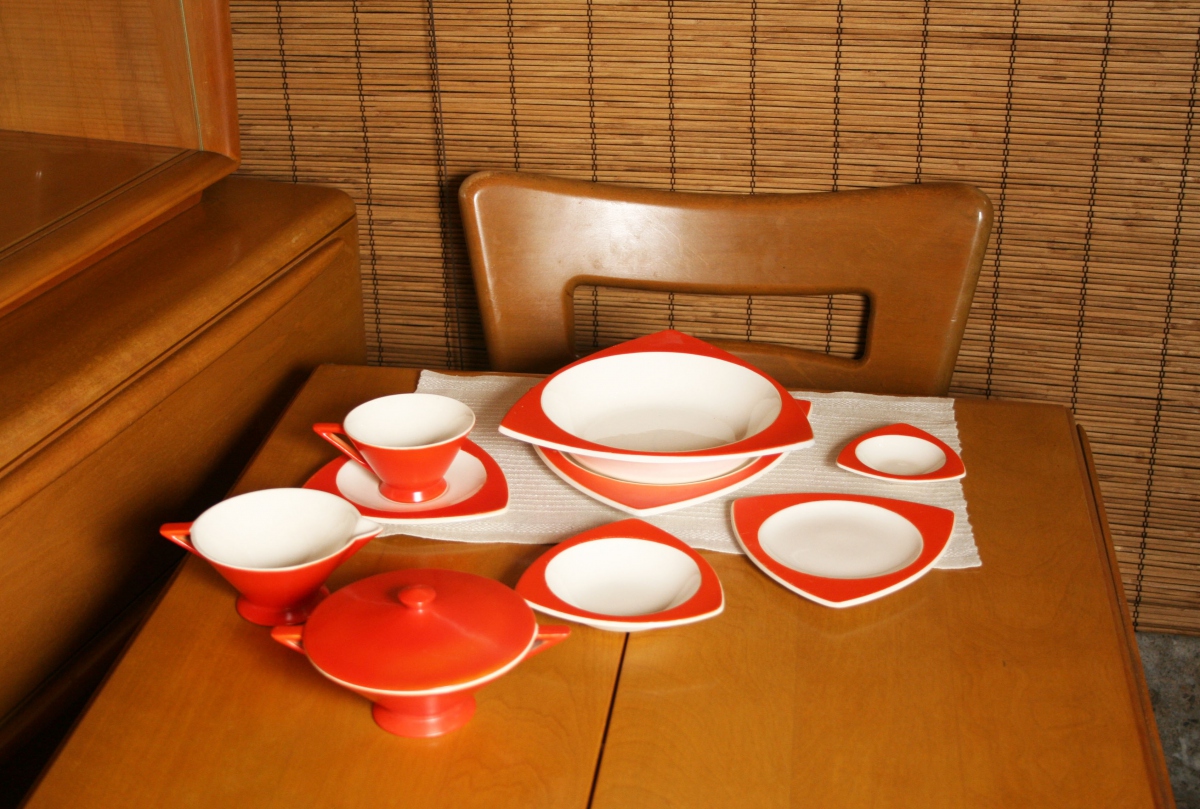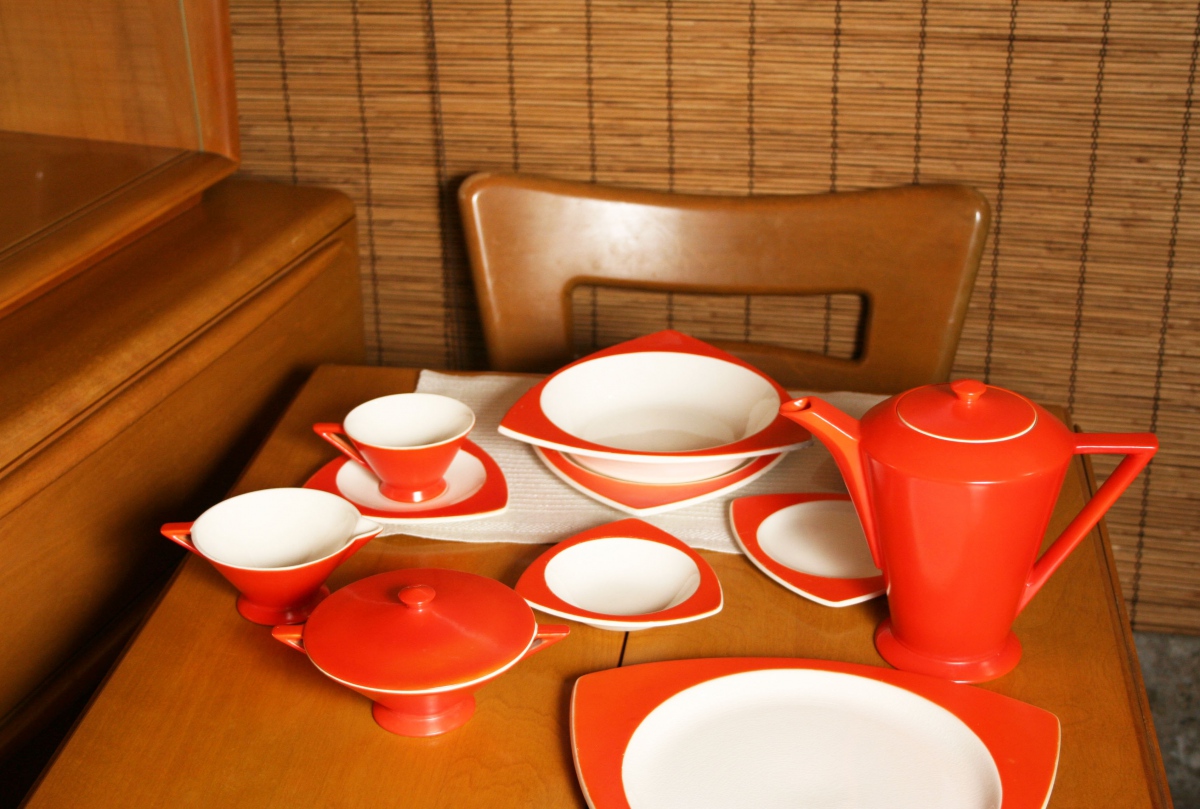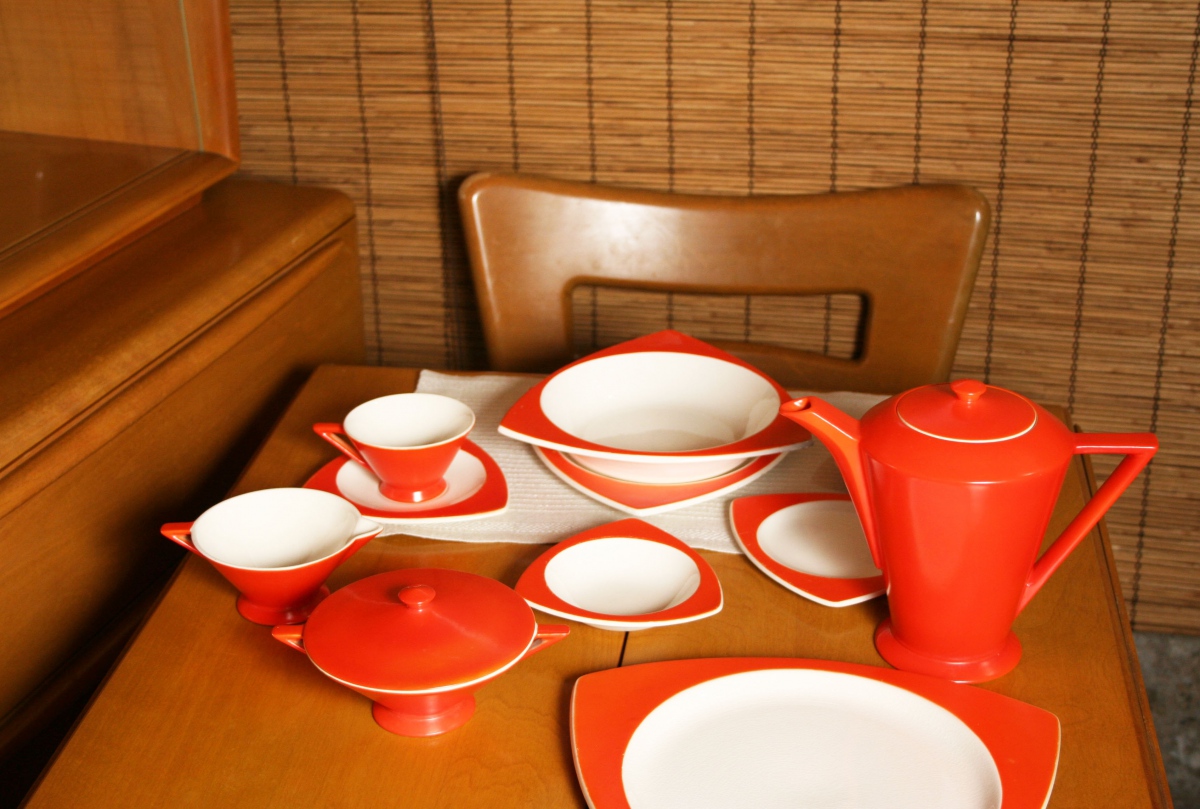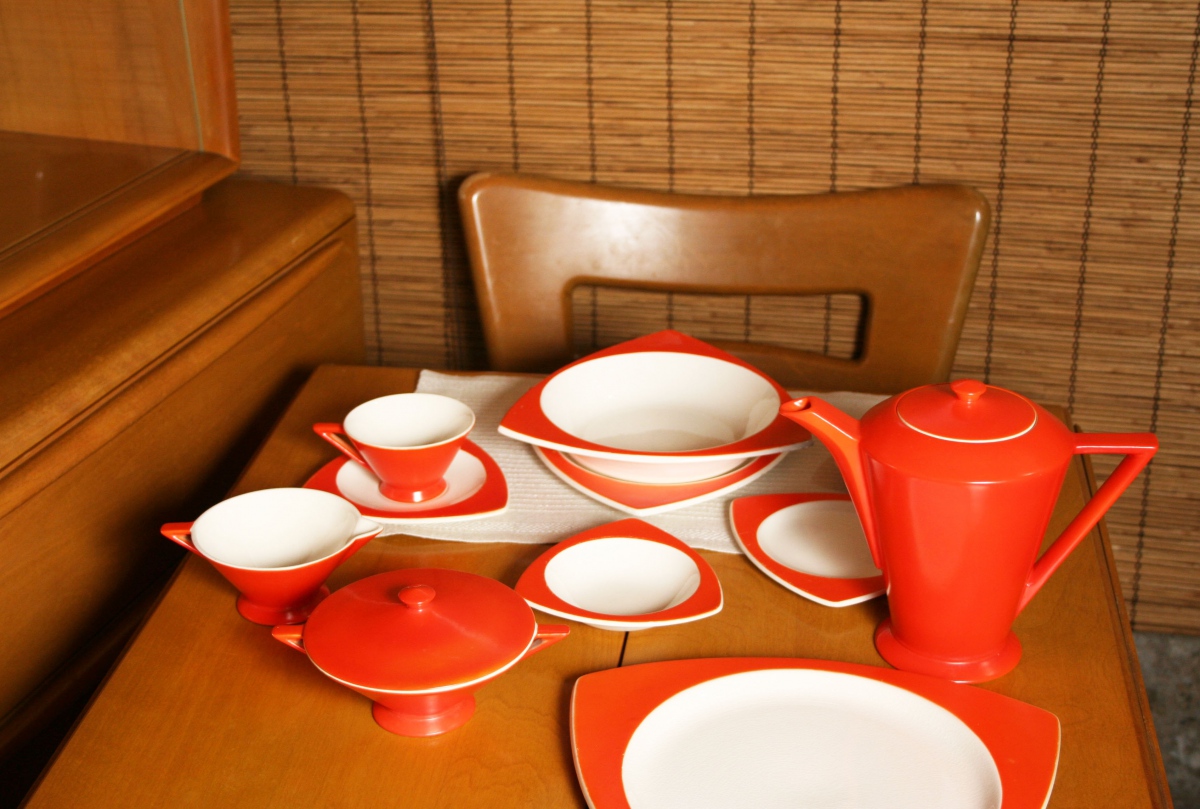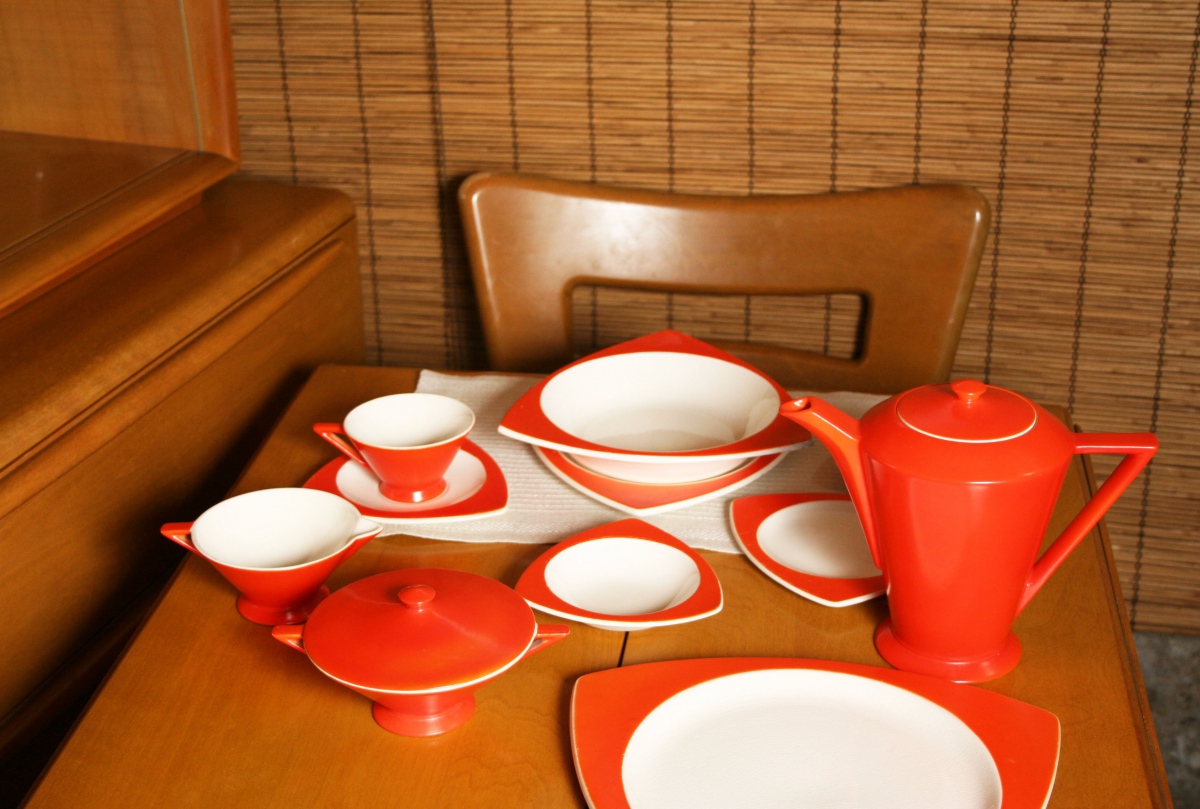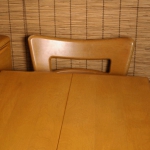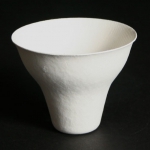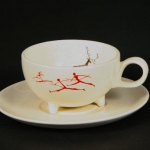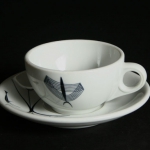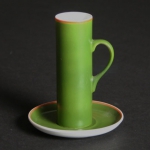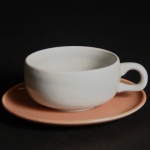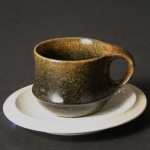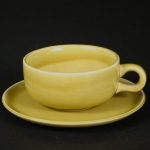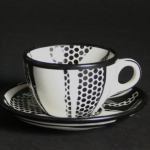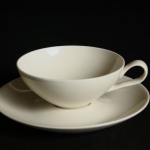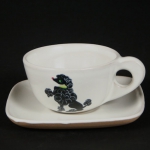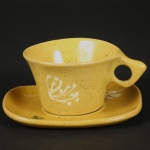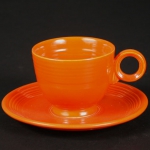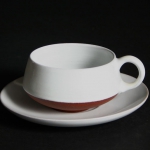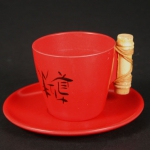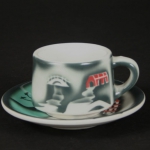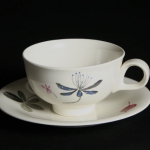Mandarin Tricorne
[Previous] [Main Page] [Next]
One Table Oodles of Dishes:
Mandarin Tricorne

Although designed in the early 1930s, Tricorne’s simple, modernistic shape and bright red-orange Mandarin color was a precursor to mid-century modern dinnerware designs that would follow a decade later.
Tricorne dinnerware was designed by Don Schreckengost for Salem China Company of Salem, Ohio. With consumer demand for color in ceramics, Don created the Tricorne plate shape in response to a new uranium-based glaze while he worked at Salem as a nineteen-year old college student on a summer internship with the firm. Tricorne was sold along with Salem’s Streamline shape, designed and patented in 1935 by Vincent Broomhall and Herbert A. Smith, which was used for accompanying vessels, such as the sugar bowl, creamer and cup in this set.
To market this dinnerware, Salem China Company partnered with Warner Brothers in order to associate their table wares with Hollywood glamour and celebrity. Its sales and marketing department hired movie stars to sit for publicity photographs taking their tea with the Tricorne and Streamline sets. Salem also collaborated with movie theatres on “Dish Nights” at which female moviegoers received a free piece of the brand’s china. These advertising schemes as well as Tricorne and Streamline’s aggressively modern color and pattern serve as reminders of the creative strategies that manufactures enacted to maintain a profit in the years of the Great Depression.
Donald Schreckengost was the brother of Viktor and Paul, all ceramicists, and all sons of a ceramicist from Sebring, Ohio. Don graduated from the Cleveland School of Art in 1935. While a student, in 1932 he worked at Salem China Company as an intern and then became their director of design. In 1936 he was awarded the Agnes Gund Scholarship to study sculpture under Adolph Jensen in Stockholm. From 1935 to 1945 he taught as a professor of ceramic industrial design at Alfred University, in Alfred, New York. He was the design director of the Homer Laughlin China Company in Newell, West Virginia, from 1945 to 1960. Following his tenure at Homer Laughlin, Schreckengost served as director of design for many pottery companies, including the Hall China Company in East Liverpool, Ohio, beginning in 1960; Mayer China Company in Beaver Falls, Pennsylvania, from 1960 to 1963; Royal China Company in Sebring, Ohio, from 1962 to 1965; and Summitville Tile Company in Ohio, from 1969 to 2000. Don Schreckengost passed away in 2001.
Salem China Company was founded by Patrick and John McNicol, Daniel Cronin and William Smith in 1898 in Salem, Ohio. Originally producing commercial dinnerware and accessories, they shifted production to household dinnerware, novelty ware and souvenir plates. In 1918, the company was purchased by F. A. Sebring and Floyd W. McKee. By 1930, the pottery was firing 25,000 pieces per day and at the height of production employed over 500 people. Salem China stopped manufacturing wares in 1967 and was reorganized into a sales and service company.
References: Laurel Hollow Park Website, Webmaster: Mark Gonzalez (www.laurelhollowpark.net); The Official Price Guide to Pottery and Porcelain, 8th Edition, Harvey Duke (New York, NY: House of Collectibles, 1995); Cooper Hewitt Website (www.cooperhewitt.org).
essay by Scott A. Vermillion


